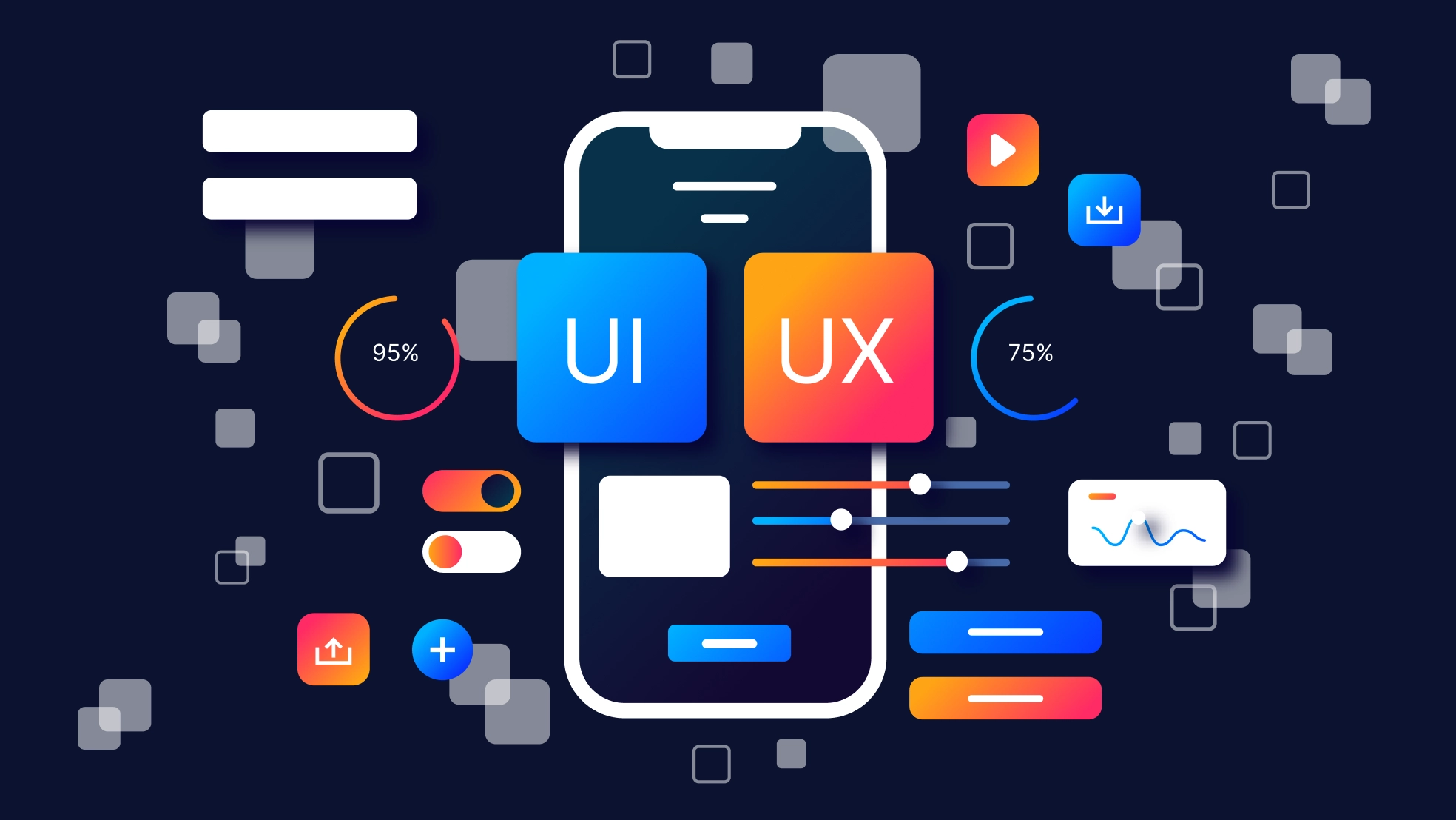
How to Become a UI/UX Designer: From Zero to Hero is a comprehensive guide for aspiring designers, covering foundational principles, advanced techniques, practical tips, and real-world examples to master user-friendly digital interfaces.

User interface (UI) and user experience (UX) design are now critical components of successful product development in the digital age. UI/UX designers work on any digital interface, whether it is a website, mobile app, or otherwise, to ensure a seamless and enjoyable user experience. If you want to work as a professional UI/UX designer, this comprehensive guide will help you get there. It will transform you from a novice to an expert.
Knowing About UI/UX Design
Before pursuing a career as a designer, it is critical to understand what UI/UX design entails. User interface (UI) design focuses on a product's visual components, such as its layout, color scheme, font, and interactive features like buttons and icons. In contrast, user experience (UX) design is concerned with the overall user experience of a product, with a focus on usability, accessibility, and enjoyable interaction.
To create interfaces that are both visually appealing and user-friendly, UI/UX designers must combine technical knowledge with creativity. This role includes user research, wireframing, prototyping, and usability testing to ensure that the final product meets the expectations and needs of the users.
Step-by-Step Guide to Becoming a UI/UX Designer
1. Study the Fundamentals of UX/UI Design:
First, acquaint yourself with the basic concepts of UI/UX design. A strong foundation can be found in a plethora of online resources, such as tutorials, videos, and articles. Important ideas to investigate are:
- User-Centered Design prioritizes the user's needs and preferences when designing products.
- Master the art of making interactive models (prototypes) and basic sketches (wireframes) for your designs.
- Usability Principles: Understand the concepts underlying user-friendly, instinctive interface design.
- Visual Design Fundamentals: To create visually appealing interfaces, understand color theory, typography, and layout design.
2. Obtain Necessary Equipment:
A range of tools are used by UI/UX designers during the creation and testing process. Among the instruments that are most frequently used are:
- Sketch: This vector graphics editor is primarily used for prototypes and interface design.
- Adobe XD is a versatile tool for user interface and user experience design, prototyping, and collaboration.
- Figma is an online design tool that allows for instant teamwork.
- InVision is an interactive mockup tool for prototyping that integrates with other design programs.
3. Create a Powerful Portfolio:
Creating a strong portfolio is essential for demonstrating your skills and getting hired as a UI/UX designer. Start with small projects, such as redesigning an existing application or website or creating a new user interface for an imaginary product. Add a variety of projects to your portfolio as you gain experience to demonstrate your adaptability and problem-solving abilities. Every project should contain:
- Project Overview: Provide a brief explanation of the project's objectives and your role.
- Describe your entire design process, including wireframing, user research, prototyping, and usability testing.
- Final Designs: Use high-quality photos to highlight the finished product, and if possible, interactive prototypes.
4. Examine and Implement UX Research Methods:
Good UX design begins with thorough research. Discover various UX research techniques, such as usability testing, surveys, and user interviews. Using these strategies, you can ensure that your designs are user-centered by better understanding their preferences and needs. Important actions include the following:
- Establish research objectives: Determine what you hope to learn from your investigation.
- Choose Techniques: Based on your objectives and available resources, select the appropriate research methods.
- Conduct user research by collecting information through usability tests, surveys, and interviews.
- Analyze Data: Use your research to identify trends and insights that will help you make design decisions.
5. Stay Updated with Industry Trends:
The field of UI/UX design is constantly changing. Participate in design communities, attend webinars, and read industry blogs to stay current on the latest tools, trends, and best practices. Among the useful resources include:
- Blogs: UX Design.cc, Nielsen Norman Group, and Smashing Magazine
- Podcasts: The UX Podcast, UI Breakfast, and Design Better Communities: Dribbble, UX Mastery, Designer Hangout.
6. Make Connections with Other Designers:
Building a network is essential for advancing your career in UI/UX design. Design conferences, local meetups, and online communities are good places to network with other professionals. Job openings, mentoring relationships, and insightful criticism on your work can all result from networking.
7. Look for Freelance and Internship Opportunities:
Look for freelance jobs or internships to gain real-world experience. An internship allows you to gain practical experience while working with experienced designers. However, freelancing can help you develop a diverse portfolio and client management skills.
8. Think About Formal Education:
Formal design education can provide a structured learning environment and valuable credentials, but it is not always necessary. Consider applying to UI/UX design boot camps or pursuing a design degree. Numerous bootcamps offer focused, project-based learning opportunities to help you advance your career.
9. Get Soft Skills Development:
UI/UX designers need strong soft skills in addition to technical expertise. Among them are:
- Effective communication is critical when making design decisions and collaborating with stakeholders and team members.
- Problem Solving: Approach design challenges with a strategic and imaginative mindset.
- Empathy: Recognize and prioritize the needs and perspectives of users.
- Pay close attention to details. Ensure that your designs are flawless and error-free.
10. Apply for Jobs in UI/UX Design:
You should begin applying for UI/UX design positions once you have a strong portfolio and relevant experience. Make sure to highlight your experience and skills in both your cover letter and resume. During interviews, be prepared to discuss your design process and showcase your work.
In summary, becoming a UI/UX designer requires dedication, ongoing education, and a passion for creating user-centered designs. You can become a skilled UI/UX designer by following the steps outlined in this guide. Always prioritize the user, solicit feedback, and keep your curiosity alive during the design process. You can become a UI/UX designer and make a significant impact on the digital world if you have the right attitude and perseverance.
F.A.Q
1. How to become a ux/ux designer without a degree
It is completely feasible to become a UX/UI designer without a degree by using a methodical approach to education and skill development. Start by using online tutorials and courses to learn the fundamentals of interface design, user experience, and design principles. Gain expertise using well-known design programs like Figma, Adobe XD, and Sketch. Practice by working on actual projects or revamping pre-existing websites and apps. Create a compelling portfolio that highlights your work and highlights your ability to solve problems and the design process. To get practical experience and build your reputation, network with people in the field, join design communities, and think about freelancing or internships.
2. How to become ui/ux designer after 12th
After completing the 12th grade, begin honing your design fundamentals using programs like Adobe XD, Figma, and Sketch in order to become a UI/UX designer. A bachelor's degree or certification in design, human-computer interface, or a similar discipline can be worthwhile. Technical skills can also be developed through online certification programs and courses. To demonstrate your abilities, work on building a solid portfolio through freelancing or personal projects. It is essential to learn design principles, wireframing, prototyping, and user research. A UI/UX design internship or junior role can also offer beneficial work experience.
3. How to become a ui/ux designer with no experience
With commitment and the correct procedures, it is possible to become a UI/UX designer without any prior expertise. Learn the basics of design first, such as typography, colour theory, and user-centred design concepts. Learn how to use design software such as Adobe XD, Sketch, or Figma. Create personal projects, update websites or apps that already exist, and provide internships or freelance labour to build a portfolio. Participate in design communities, take online UI/UX design classes, and ask for comments on your work. Opening doors in the field can also be facilitated by networking and receiving guidance from seasoned designers.


